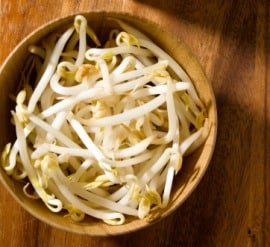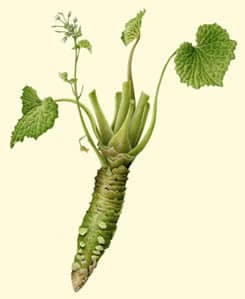Celeriac (Apium graveolens rapaceum) is also known as celery root, turnip-rooted celery or knob celery. It is a kind of celery, grown as a root vegetable for its large and bulbous hypocotyl rather than for its stem and leaves. The swollen hypocotyl is typically used when it is about 10–12 cm in diameter; about the size of a large potato. Unlike other root vegetables, which store a large amount of starch, celery root is only about 5-6% starch by weight.
Celeriac may be used raw or cooked. It has a tough, furrowed, outer surface which is usually sliced off before use because it is too rough to peel. Celeriac has a celery flavour, and is often used as a flavouring in soups and stews; it can also be used on its own, usually mashed, or used in casseroles, gratins and baked dishes. It can be roasted like a potato, giving it a crispy edge.
Celeriac is a special variety of celery which is cultivated specifically for its large, robust, and unfortunately rather ugly root. The root vegetable has a number of aliases, including knob celery, turnip rooted celery, or just celery root. There are a number of raw and cooked uses for celeriac, which is an enduring favorite in European cuisine. Outside of Europe, celeriac can sometimes be difficult to obtain, but open-minded greengrocers may carry it. It can also be grown in any garden where celery will thrive.
็ำHealth Benefits of Celeriac
- A good source of fiber, including the soluble type that lowers elevated blood cholesterol.
- Low in calories. A half-cup serving of cooked celeriac contains less than 20 calories, yet it provides about 500mg of potassium; it also contains 1mg of iron and 5mg of vitamin C.
- It is also a good source of vitamin K, folate, phosphorus, vitamin B6, magnesium and manganese

